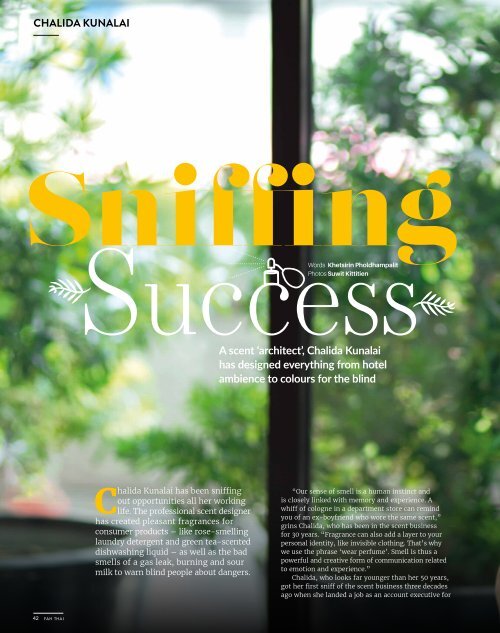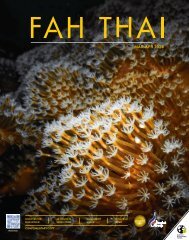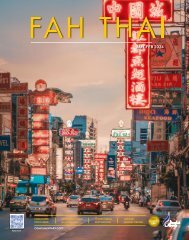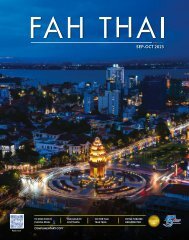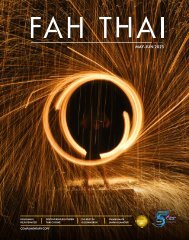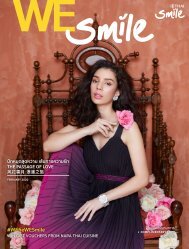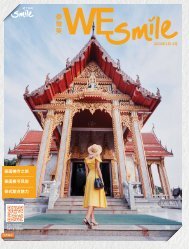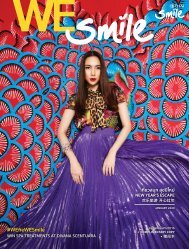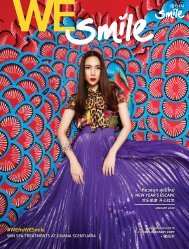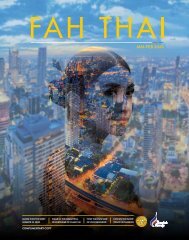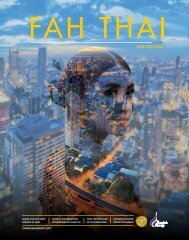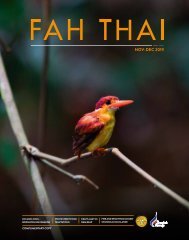Fah Thai Magazine Mar-Apr 2020
Fah Thai Magazine is an In-Flight Magazine of Bangkok Airways.
Fah Thai Magazine is an In-Flight Magazine of Bangkok Airways.
Create successful ePaper yourself
Turn your PDF publications into a flip-book with our unique Google optimized e-Paper software.
CHALIDA KUNALAI<br />
Sniffing<br />
Success<br />
Words Khetsirin Pholdhampalit<br />
Photos Suwit Kittitien<br />
A scent ‘architect’, Chalida Kunalai<br />
has designed everything from hotel<br />
ambience to colours for the blind<br />
Chalida Kunalai has been sniffing<br />
out opportunities all her working<br />
life. The professional scent designer<br />
has created pleasant fragrances for<br />
consumer products – like rose-smelling<br />
laundry detergent and green tea-scented<br />
dishwashing liquid – as well as the bad<br />
smells of a gas leak, burning and sour<br />
milk to warn blind people about dangers.<br />
“Our sense of smell is a human instinct and<br />
is closely linked with memory and experience. A<br />
whiff of cologne in a department store can remind<br />
you of an ex-boyfriend who wore the same scent,”<br />
grins Chalida, who has been in the scent business<br />
for 30 years. “Fragrance can also add a layer to your<br />
personal identity, like invisible clothing. That’s why<br />
we use the phrase ‘wear perfume’. Smell is thus a<br />
powerful and creative form of communication related<br />
to emotion and experience.”<br />
Chalida, who looks far younger than her 50 years,<br />
got her first sniff of the scent business three decades<br />
ago when she landed a job as an account executive for<br />
a perfume house. The role taught her plenty about the<br />
art of fragrance.<br />
“A scent designer works closely with a perfumer.<br />
I am the ‘architect’ who creates plans that are used<br />
to make something, while a perfumer is the engineer<br />
who takes those plans and makes them practical and<br />
usable,” says Chalida, who graduated in political<br />
science and mass communication.<br />
After working in the perfume house for 10 years, she<br />
moved on to designing fragrances for Asian consumer<br />
products – a role she has filled for the past 20 years. Her<br />
task is a challenging one: to create scents that can be<br />
infused in goods that will appeal to different lifestyles<br />
and cultures of countries across Asia.<br />
“For instance, Chinese food normally doesn’t have<br />
strong flavours, so Chinese people prefer light and natural<br />
odours to strong-smelling scents. On the contrary, we<br />
can’t use light, pleasant odours for goods sold in India<br />
because Indians have noses that are familiar with intense<br />
spices. <strong>Thai</strong> people, meanwhile, like floral and fruity scents<br />
such as lavender and apple,” says Chalida, whose nose<br />
was “educated” at courses on perfume she took in France<br />
during which she learned more about sensory perception<br />
and the raw materials of fragrances.<br />
42 43


